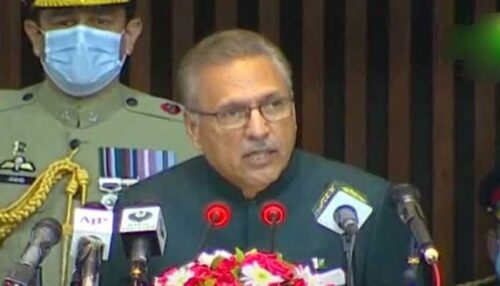By: Sajjad Hussain Shah
Pakistan is in the grasp of a sizzling heat wave. Parts of the country have been swaddled by high temperatures since late April. Many areas of the country have been highly affected by this perilous heat wave. In the midst of the record breaking temperature in the south eastern region of the country, Sindh province is staring at a catastrophe due to water shortage.
Currently, Cholistan desert is experiencing a brutal water shortage. Due to deficient water and intense heat, over 50 animals have died so far. The people of Cholistan are frantic and desperate for even a single drop of water. Unfortunately, this troublesome situation has not received due attention of the concerned authorities.
According to Federal Government Agency IRSA, the total shortage of water sources in rivers and dams across the country at present is 38% above average, including 13% in Indus and Tarbela dams, 46% in Kabul, Jhelum, and Mangla dams. 44%, 48% in Chenab river and 66% in other sources.
Several experts say that this year has been the worst in terms of drought. The agriculture in Sindh is relying purely on river Indus and it’s not only this year that this is happening but this has been happening from hundreds of years.
Most of the country’s experts say that water is more dependent on snowfall in March, April and early May. Glacier ice begins to melt after May and flow into the rivers but now since there has been less rain and less snow in the winter due to which the reception of water was low in March and April.
The weather in Sindh province is always one month ahead of Punjab due to which Sindh usually needs water in March and April. In Sindh the summer season starts one month before Punjab which is why Rabi season also starts earlier and because of this when wheat gets cultivated in Punjab it is time to harvest wheat in Sindh.
Experts have notified that this year that water shortages in Sindh maybe historic as crops have depreciated. Due to scarce water the land cannot be prepared for new water. Though Farmers and Landowners have been raising their voice about this important issue but the problems lies within. A new donor report helps us understand the key issues related to this important issue.
The UNDP issued its quarterly report titled “Development Advocate Pakistan” which addresses some foremost issues that our country is facing.
Pakistan’s water availability has gone downhill noticeably from a year being water abundant country and the next year experiencing extreme water stress. UNDP statistics show that between the year 1990 and 2015, per capita water availability declined from 2,172 cubic metres per native, to 1,306 cubic metres per inhabitant.
The report is an evidence of how the feudal system is maintaining the water scarcity and worsening the economic situation in the rural areas of Pakistan. The Former chairman of the Water and Power Development Authority (WAPDA), Shamsul Mulk highlighted an overlooked fact that Pakistan does not have a defined water policy and water that exists is mostly used by landlords in the most unjust manner and the poor are left without their share.
Unfortunately, many of these landlords are sitting in the Parliament, acting like truants and because of this, water, which belongs to all, has become the sole property of landlords and the poor farmers are deprived of their due share. This leads to an eccentric engagement as to why the Sindh government that is PPP’s government and the parliamentarians are not interested in dealing with this extreme water crisis. It is merely simple that these parliamentarians are interested in these thuggish acts which help them to stay economically and politically powerful in these regions where they summon from.
The worst example of feudalism is in Sindh, they do not want the poor to become self sufficient in order to remain in power thus this water issue is very political in nature.
Since this water issue has become a political issue, the federal and the provincial governments of Punjab and Sindh had to put their heads together to embark upon their crucial issue of water distribution but unfortunately, the negligence of the Sindh government led this to nowhere. Instead of working together with the other provinces, PPP’s government reported their water losses incorrectly. It was suggested by the Ex Provincial Minister of Punjab for Irrigation, Muhammad Mohsin Khan Leghari that each province should have its own telemetry and the one noting the measurement should be neutral but his suggestions were not taken into consideration at all.
An honest distribution of water is the correct solution but measuring water correctly also needs to be done. Reaching an agreement on this matter is a huge challenge that the Sindh government needs to face.




